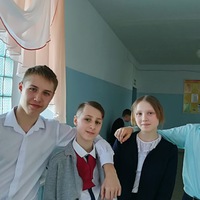
рые и неверные ения. Утверждения Верно/Невер Активируется симпатическая система. Активируется
парасимпатическая система, Выделяется гормон адреналин, Кровеносные сосуды расширяются, Выделяется гормон ацетилхолин. Частота сердечных сокращений увеличивается. Сердцебиение снижается. Усиливается кровообращение. Расширяются бронхиолы легких. Бронхиолы легких расслабляются, Урори 0
0
 0
0
Ответы на вопрос
 Внимание! Ответы на вопросы дают живые люди. Они могут содержать ошибочную информацию, заблуждения, а также ответы могут быть сгенерированы нейросетями. Будьте внимательны. Если вы уверены, что ответ неверный, нажмите кнопку "Пожаловаться" под ответом.
Внимание! Ответы на вопросы дают живые люди. Они могут содержать ошибочную информацию, заблуждения, а также ответы могут быть сгенерированы нейросетями. Будьте внимательны. Если вы уверены, что ответ неверный, нажмите кнопку "Пожаловаться" под ответом.

Активируется симпатическая система. ВЕРНО
Активируется парасимпатическая система. НЕ ВЕРНО
Выделяется гормон адреналин. ВЕРНО
Кровеносные сосуды расширяются. ВЕРНО
Выделяется гормон ацетилхолин. НЕ ВЕРНО
Частота сердечных сокращений увеличивается. ВЕРНО
Сердцебиение снижается. НЕ ВЕРНО
Усиливается кровообращение. ВЕРНО
Расширяются бронхиолы легких. ВЕРНО
Бронхиолы легких расслабляются. НЕ ВЕРНО
 0
0
 0
0

Sympathetic and Parasympathetic Nervous Systems
The sympathetic and parasympathetic nervous systems are two divisions of the autonomic nervous system, which controls involuntary bodily functions. These systems work together to maintain homeostasis in the body.
1. Activation of the Sympathetic Nervous System: - The sympathetic nervous system is responsible for the "fight or flight" response, which is activated in times of stress or danger. - When the sympathetic nervous system is activated, the body prepares for action by increasing heart rate, dilating blood vessels, and releasing adrenaline (epinephrine) [[1]]. - The release of adrenaline helps to increase blood flow to the muscles, improve oxygen delivery, and enhance overall physical performance.
2. Activation of the Parasympathetic Nervous System: - The parasympathetic nervous system is responsible for the "rest and digest" response, which promotes relaxation and conserves energy. - When the parasympathetic nervous system is activated, heart rate decreases, blood vessels constrict, and the body enters a state of rest and recovery. - The parasympathetic system also stimulates the release of acetylcholine, which helps to slow down heart rate and promote digestion [[2]].
3. Effects on Heart Rate and Blood Circulation: - Activation of the sympathetic nervous system leads to an increase in heart rate and the force of heart contractions, which helps to pump more blood to the muscles and vital organs [[3]]. - On the other hand, activation of the parasympathetic nervous system slows down heart rate and reduces the force of heart contractions, allowing the body to conserve energy and promote relaxation.
4. Effects on Bronchial Tubes: - The sympathetic nervous system causes the bronchial tubes in the lungs to dilate or widen, allowing for increased airflow and improved oxygen exchange [[4]]. - In contrast, the parasympathetic nervous system causes the bronchial tubes to constrict or narrow, which can restrict airflow and decrease oxygen exchange.
In summary, the sympathetic nervous system activates the "fight or flight" response, while the parasympathetic nervous system promotes relaxation and conserves energy. The sympathetic system increases heart rate, dilates blood vessels, and releases adrenaline, while the parasympathetic system slows down heart rate, constricts blood vessels, and promotes digestion. The sympathetic system widens the bronchial tubes, while the parasympathetic system narrows them.
 0
0
 0
0
Похожие вопросы
Топ вопросов за вчера в категории Биология
Последние заданные вопросы в категории Биология
-
Математика
-
Литература
-
Алгебра
-
Русский язык
-
Геометрия
-
Английский язык
-
Химия
-
Физика
-
Биология
-
Другие предметы
-
История
-
Обществознание
-
Окружающий мир
-
География
-
Українська мова
-
Информатика
-
Українська література
-
Қазақ тiлi
-
Экономика
-
Музыка
-
Право
-
Беларуская мова
-
Французский язык
-
Немецкий язык
-
МХК
-
ОБЖ
-
Психология
-
Физкультура и спорт
-
Астрономия
-
Кыргыз тили
-
Оʻzbek tili
























